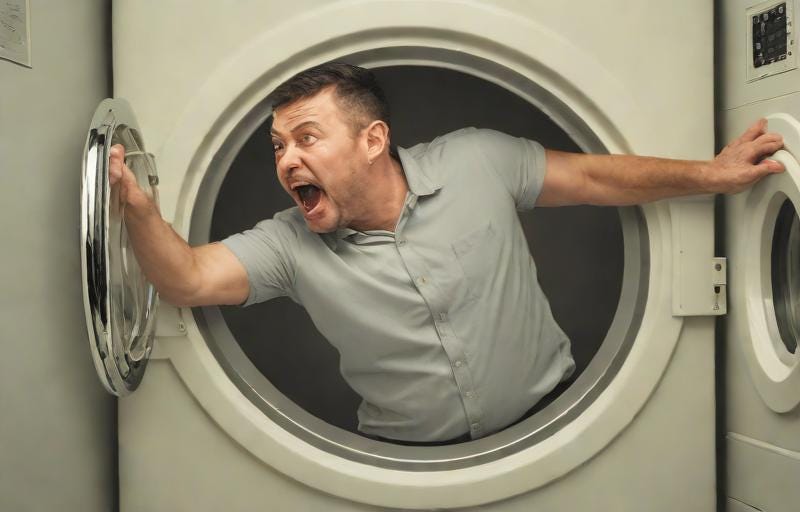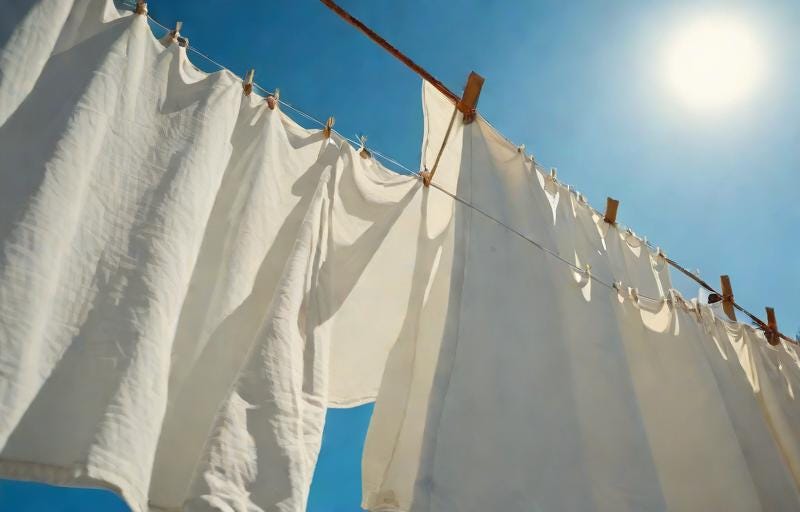Kathy, my wife of 49 years, is away helping with our new grandson. She has left behind your humble narrator, a daughter-in-law, and a 15-year-old grandson to our own devices. Often the greatest discovery in a man’s life is how central his wife is to everything. There’s an immediate vacuum that has left us disoriented. We are all capable of doing the housekeeping but there is something about the homemaking that is amiss. Like everyone, Kathy has specific ways of doing things. There are specific ways in which the food is purchased and prepared. There are specific ways the laundry is done. There are specific ways in which she deals with her bookkeeping and insurance clients. There are the many hidden dimensions of her ministry to all kinds of people in need and her more visible one as the editor of Theologika.net. Yes, she builds and manages her own websites. More than that there are the specific ways in which she lights up the house and our lives and makes a home.
Despite their relationship to real estate, physical structures, and bathroom towels, homes are neither physical nor tangible. The everyday activities of cooking, cleaning, and doing the laundry are all things that can be done in all kinds of living situations from large institutions to single room occupancy hotels. Clearly, we often think of a free-standing home or an apartment. But a home is a soul that inhabits a space and makes it a habitation or dwelling. A home can be one person or more with kindred spirits of dogs, cats, birds, or fish which are themselves endowed with certain human characteristics and personalities. In the best of cases a home is a spiritual state of love, peace, and security. A home for one or more than one is created by mutual love, respect, and reverence. We are never more ourselves than when we are at home even when that self is conflicted, confused, or hurt. Home is a sacred space in time which defies both.
The conventional wisdom is that men and women should share equally in the mundane chores of cooking, cleaning, shopping, and sundry errands. Without a trace of guilt, I would like to say that Kathy does a lot more than I do. My bi-polar traits have their advantages at times, but my restless mind never likes to do the same task the same way twice. Of course, there are bouts of depression that make the simplest things impossible. Kathy is always a pleasant and reliable presence as she handles everything in a systematic and creative way. So, there is no way that I do half of the work.
However, I was well trained in housekeeping and homemaking as a child. As I booted up the ancient hard drives of my long-term memory banks to do the laundry, cook, and clean, wonderful people came to visit me.
My mother’s life was forever changed by her home economics teacher in middle school in the 1930s. My grandparents were immigrants from Mexico and as a first generation American my mother’s whole world was still quintessentially Mexican. My mother introduced her mother to mayonnaise, sandwiches, cakes, and pies along with the basics of nutrition focusing on American fruits and vegetables and their preparation. Thanksgiving dinner made its debut but in my mother’s home in its more ancient Mexican form of the indigenous fowl with a mole poblano sauce.
My mother’s teacher used to have small dinner parties and paid my mother and some of the other girls to help prepare the food and set the table with china, crystal, and myriads of silver ware. One year at Christmas in the depths of the depression, her teacher gave her a small coin purse filled with quarters. (Adjusted for inflation each quarter would be worth about $6.00 today.)
My mother got her approach to cleanliness from my grandmother which included large doses of bleach, soap, and elbow grease. In a world before synthetics, sheets, shirts, and blouses were starched. Despite the gulf in time, my reference point for a clean kitchen is still my mother’s kitchen. The reference is not so much for the absence of grime and microbes but for the sun coming through the curtains, the smell of cookies, and the lemonade that greeted us after school. Cleaning the mirror surface of my induction cooktop still puts me in mind of our state-of-the-art Gaffers and Sattler gas range with its gleaming white enamel and sparking chrome handles and trim.
My father was a bachelor for many years and married in his 30s. From the time he was 12 he was caught up in the Mexican Revolution and lived on his own at various jobs to support his parents and older sisters. He had wonderful memories of his childhood and the gentleness of his mother. Contrary to stereotype, he insisted that his sons knew how to cook, clean, iron and take care of ourselves. He was a natural foods advocate ahead of his time but in some respects, he was still hanging on to a world before refrigeration and insecticides. Food was to be fresh and of good quality. Leftovers were a no-no. Vegetables were to be steamed or parboiled. When I am in the store or rummaging through the vegetable drawer in the fridge, I often see his deft fingers harvesting vegetables from our garden.
Our family diet is a cross cultural mix of Mexican and American style dishes with mixes of Asian and Indian cuisine. Too much Mexican food and I get a hankering for mashed potatoes and gravy. Too much American food and I go into chili withdrawal. One day I was complaining to my Irish German American wife from Spokane about the fact that we were having too much Mexican food. Without missing a beat, with an Irish glint in her eyes, she smiled and said, “In that case you should have married an Anglo.”
Trying to get the wash out of the side loading washer without getting my head stuck brings to mind a simpler time when my job was to alert my mother when the tank was about full so she could get off the phone with one of her comadres and start the agitation cycle in our Maytag. It was just before the introduction of automatic washers, and it had a wringer for the spin cycle that led us to the solar drying cycle on the clothesline. This new model we have has a certain technological smug insouciance as it weighs, shifts the weight, gives it a toss before deciding whether to use spring water or Perrier.
As I try to look cool while fumbling the clothes out of the side loading washer into the side loading dryer without dropping too many on the floor, I am warned by the toe tapping spirit in the machine that I must change the lint filter which leads to another dilemma of how to open it. If it hadn’t been raining, I would have hung the clothes on what my father-in-law called the “spaghetti tree” with its center column and four arms. There is something utterly mundane about dryers despite their cheerful menus about fabrics, dryness levels, wrinkles or no wrinkles choices and steam options. Solar dryers on a beautiful day are far from mundane. We didn’t’ have a spaghetti tree. My father, an oil field welder, put up cross bars in the form of a “T” made from four-inch galvanized pipe sunk in concrete that could withstand earthquakes and tsunamis. I remember glorious moments as the newly bleached sheets billowed like sails in the salt breeze and southern California sun in Ventura against the bluest of blue skies.
Perhaps house cleaning is mundane but for the shipwrecked husband putting his childhood training to use it is a homecoming of sorts. It is a realization that making a home is always a beginning and never an end.
Thanks again for your support and encouragement.
Please share this post with your friends.







